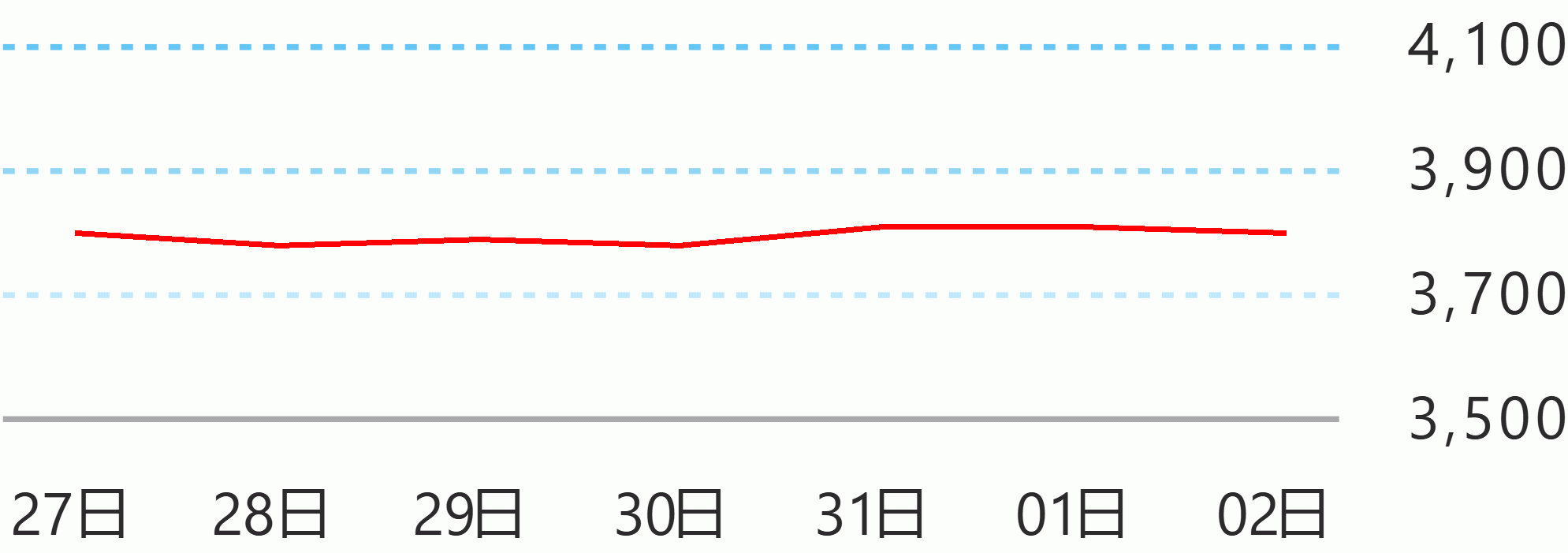Results of the first quarter 2022 Senior Bank Loan Officers’ Survey (SLOS) continued to indicate that a large proportion of bank respondents maintained their overall lending standards for loans to businesses and households based on the modal approach.
Meanwhile, the diffusion index (DI) approach pointed to mixed results given that credit standards for enterprises generally showed a net tightening while a net easing of overall lending standards was reflected for consumer loans.
The BSP has been conducting the SLOS since 2009 to gain a better understanding of banks’ lending behavior, which is an important indicator of the strength of credit activity in the country.
The survey also helps the BSP assess the robustness of credit demand, prevailing conditions in asset markets, and the overall strength of bank lending as a transmission channel of monetary policy.
The survey consists of questions on loan officers’ perceptions relating to the overall credit standards of their respective banks, as well as to factors affecting the supply of and demand for loans to both enterprises and households.
The analysis of the results of the SLOS focuses on the quarter-on-quarter changes in the perception of respondent banks. Starting with the third quarter 2018 survey round, the BSP expanded the coverage of the survey to include new foreign commercial banks and large thrift banks.
Prior to the third quarter 2018, the survey covered only universal and commercial banks. For the 1st quarter 2022 survey, questionnaires were sent to a total of 64 banks (42 universal and commercial banks and 22 thrift banks), 52 of whom sent in their responses, representing a response rate of 81.3 percent.
Survey responses for the first quarter 2022 SLOS were gathered between March 1 to April 7 2022. The duration of data gathering was in conjunction with the government’s placement of NCR and 38 other areas in CAR and Regions 1 to 11 under COVID-19 Alert Level 1.
Some key events during the survey period, which likely contributed to the banks’ responses, also include the ongoing Ukraine-Russia conflict which began on 24 February 2022 along with the US Fed’s gradual tapering since November 2021.
Lending to Enterprises
The modal-based results for first quarter of 2022 showed that most respondent banks (72.0 percent) indicated generally unchanged overall lending standards for loans to businesses. On one hand, the DI-based method pointed to net tightening of overall credit standards across all borrower firm sizes (specifically top corporations, large middle-market enterprises, small and medium enterprises, and micro enterprises). Bank respondents indicated that the reported tightening of overall lending standards was mainly due to the deterioration of borrower’s profile and profitability of bank’s portfolio as well as reduced tolerance for risk and less favorable economic outlook.
In terms of specific credit standards, the net tightening of overall lending standards was manifested through stricter collateral requirements and loan covenants, reduced size of credit lines, and increased use of interest rate floors. Meanwhile, net easing for credit standards was observed in terms of narrower loan margins and longer loan maturities.
Over the next quarter, while a larger number of respondent banks anticipate maintained overall credit standards for business loans, the DI-based approach continue to show expectations of net tightening loan standards given increased uncertainty in economic growth outlook, reduced risk tolerance, and a deterioration in borrower’s profile and bank’s portfolio.
Lending to Households
In the first quarter of 2022, most respondent banks (62.5 percent) kept their overall credit standards unchanged for loans extended to households. By contrast, DI-based results continued to indicate a net easing of overall lending standards for all types of consumer loans namely, housing, credit card, auto and personal/salary loans.
Respondents associated the net easing of overall credit standards for consumer loans with more favorable economic outlook, increased tolerance for risk, as well as improvement in borrower’s profile and profitability in bank’s portfolio.
For specific credit standards, the general net easing of lending standards to households was reflected in eased collateral requirements, longer loan maturities, and decreased use of interest rate floors. Meanwhile, some form of partial tightening was apparent in terms of stricter loan covenants and narrower loan margins.
Over the next quarter, the modal-based method revealed that a higher number of respondent banks expect to maintain their overall lending standards. Similar with the previous survey results, the DI-based approach pointed to bank respondents’ anticipation of net easing overall lending standards for households given the improvement in borrower’s profile, less uncertain economic outlook, and increased tolerance for risk.
Loan Demand
Survey results for first quarter 2022 indicated that majority of the respondent banks pointed to a generally unchanged credit demand from both enterprises and households based on the modal approach. Meanwhile, DI-based results showed a net rise in overall demand for credit from across all firm types (particularly for top corporations, large middle-market firms, small and medium enterprises, and micro-enterprises) and all categories of household loans (specifically housing loans, credit card loans, auto loans, and personal/salary loans).
Bank respondents stated that the net increase in demand for business loans was attributed to the improvement in firms’ economic growth outlook as well as firms’ higher financing requirements for inventory and accounts receivable. Similarly, the net increase in credit from consumers was associated with higher household consumption, bank’s more attractive financing firms, and higher housing investment.
In the following quarter, the modal approach revealed that half of the respondent banks pointed to an expected rise in overall demand for credit from businesses while 46.0 percent of respondent banks anticipate generally unchanged loan demand from firms. Meanwhile, about 52.5 percent of respondent banks expect increased overall loan demand from households in the second quarter of 2022, while the rest anticipate unchanged overall demand.
Banks’ expectations of an increase in loan demand from both businesses and households is consistent with optimistic business and consumer sentiment for the next quarter as easing COVID-19 restrictions drove the recovery in mobility and production activities.
Similarly, the DI-method indicated expectations of a net increase in overall demand for credit from firms, which were largely attributed to the following factors: improvement in customers’ economic outlook and increased inventory and accounts receivable financing needs for borrowers. Likewise, DI-based results also pointed to anticipations of a net rise in loan demand from consumers driven by higher household consumption, bank’s more attractive financing terms, lower interest rates, and higher housing investment.
Real Estate Loans
The first quarter of 2022 results showed that a high percentage of respondent banks (72.2 percent) reported generally maintained overall lending standards for commercial real estate loans (CRELs). Meanwhile, the DI-based approach indicated a net tightening of loan standards for CREL’s for the 25th consecutive quarter. Respondents identified the following key factors in the tightening of overall credit standards for CRELs: banks' reduced tolerance for risk, a deterioration of borrowers’ profile, a less favorable economic outlook, and stricter financial regulations.
In terms of specific credit standards, the net tightening of overall loan standards for CRELs was associated with wider loan margins, reduced credit line sizes, stricter collateral requirements and loan covenants, rise in use of interest rate floors, and shortened loan maturities. For Q2 2022, while majority of banks expect unchanged standards for CRELs based on the modal approach, the DI method reflected banks’ expectations of net tighter credit standards for CRELs.
Most respondent banks in Q1 2022 stated generally unchanged loan demand for CRELs based on the modal approach. However, DI-based results revealed a net increase in demand mainly due to customers’ optimistic outlook on the economy and bank’s more attractive financing terms.
Over the following quarter, modal-based results presented banks’ anticipation of maintained credit demand for CRELs, while the DI-based method reflected a net rise in demand. Bank respondents noted the following reasons for the anticipated net increase in loan demand: customers’ positive economic prospects, increased inventory financing requirements, and lower customers’ internally-generated funds.
On housing loans extended to households, a larger proportion of banks (61.8 percent) conveyed generally unchanged credit standards based on the modal approach while the DI approach determined a net easing in the first quarter of 2022. For the next quarter, DI values also pointed to expectations of net easing in lending standards for housing loans, mainly due to improvement in borrowers’ profile, more optimistic economic growth outlook, and increased risk tolerance.
Similar with the previous quarter, a larger proportion of respondent banks reported generally unchanged credit demand for housing loans in Q1 2022. At the same time, DI-based results manifested a net rise in demand for loans due to the observed higher household consumption and housing investment as well as bank’s more attractive financing terms.
Respondent banks continue to indicate expectations of a net increase in housing loan demand for second quarter of 2022, which was mainly associated with higher housing investment and household consumption as well as financial firms’ more attractive conditions for borrowers. BSP





 English
English










